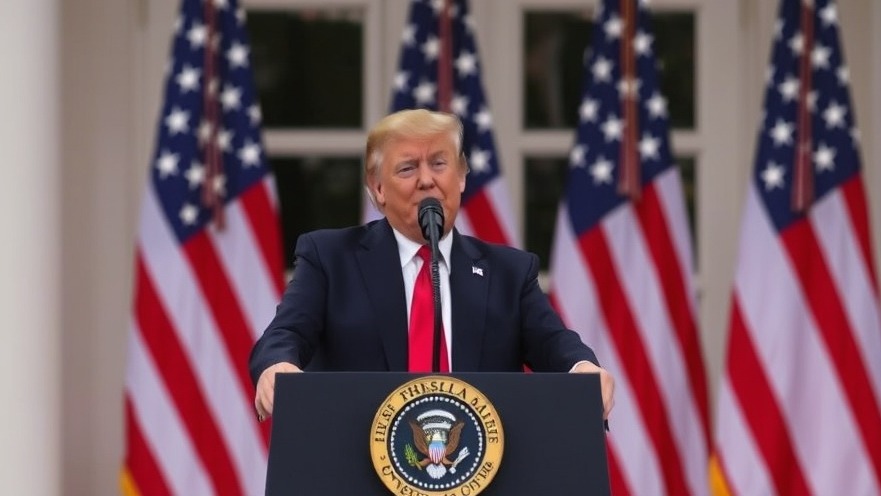
Understanding Trump's Proposed Tax Reform: A Closer Look
Former President Donald Trump's recent proposal to raise the top income tax rate for the wealthiest Americans back to 39.6% has ignited a national conversation about economic equity and tax policy. This significant shift would align the tax rate with what it was during the Obama administration, prior to the 2017 tax cuts that favored high-income earners.
What It Means for Wealth Distribution
The proposed tax increase aims to address the growing disparity between the wealthy and the working class. By redistributing wealth more equitably, the plan seeks to enhance funding for public services that benefit everyone, including healthcare, education, and infrastructure. For Maryland residents, where high-income earners often contribute disproportionately to state revenue, this proposal could result in a more balanced economic landscape.
Healthier Investments in Public Services
Raising the tax rate could yield substantial revenue that policymakers could invest in crucial public health programs. Maryland, known for its strong commitment to health and wellness, could benefit from increased funding in these areas. Improved access to healthcare services, mental health resources, and community wellness initiatives are all potential outcomes. This could lead to healthier living standards that directly benefit residents.
Empowering Middle-Class Americans
One of the touted advantages of Trump's proposal is the potential boost to the middle-class economy. With more funding allocated to social programs, there could be increased job creation in various sectors, particularly those aligned with health and wellness initiatives. Maryland's diverse job market may flourish, creating opportunities that empower residents to lead healthier lives.
Public Reaction and Environmental Implications
Public responses to the tax proposal have been mixed. Supporters argue that it’s time for the wealthiest individuals to pay a fair share, thereby enhancing social equity. Critics, however, fear that such a tax increase might deter investment and entrepreneurial ventures, which are critical to job growth. These conflicting perspectives highlight the ongoing debate about how best to stimulate the economy while also addressing fundamental inequalities.
Future Predictions: What Lies Ahead?
The proposed increase could lead to a future where public investment priorities shift dramatically. If implemented, we might see a significant rise in funding for environmental programs within Maryland. These efforts could enhance the rich natural resources of the state and contribute positively to both local ecosystems and public health.
Key Takeaways for Maryland Residents
In an ever-changing economic landscape, Maryland residents must remain informed about tax reform proposals like Trump's. Understanding how these changes could influence local laws, community services, and personal finances is crucial. Ultimately, tax policy can shape not only economic practices but also the fabric of everyday life in communities throughout Maryland.
Final Thoughts: Engaging in the Dialogue
As discussions around Trump's tax proposal continue, it's vital for individuals in Maryland to engage thoughtfully in this discourse. Residents should consider reaching out to their local representatives to express their views and to understand how such policies could directly impact their lives. Awareness and active participation in these policy discussions are essential for fostering a healthier Maryland.
 Add Row
Add Row 
 Add Element
Add Element 


Write A Comment